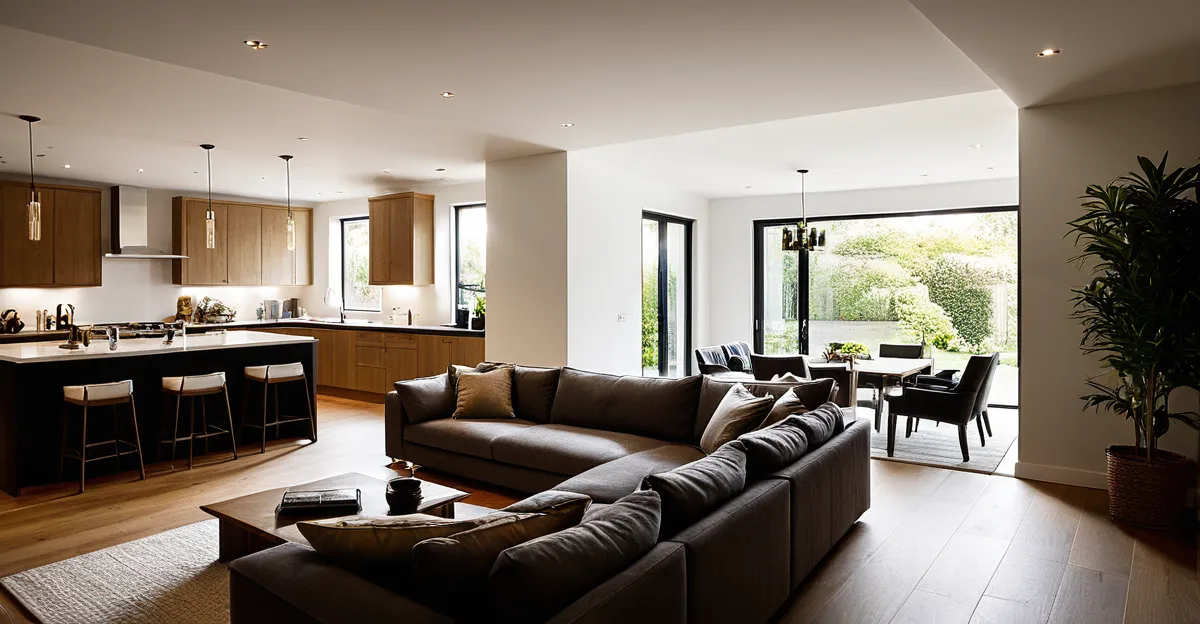Critical Mistakes that Undermine Home Coziness
Creating a truly cozy atmosphere at home requires careful attention, yet common home design errors often get in the way. One major cozy home mistake is overlooking clutter, which directly affects comfort. Cluttered spaces can cause stress and diminish the inviting vibe you want. When items pile up, the room feels chaotic rather than peaceful, breaking the sense of sanctuary essential for coziness.
Another frequent pitfall involves lighting choices. Many people ignore how different lighting influences mood. Harsh, cold lighting can make a space feel unwelcoming. Instead, thoughtful use of warm, layered lighting helps cultivate a soothing ambiance that supports relaxation.
Also read : What are the essential elements of a traditional UK home?
Lastly, failing to find the right balance of textures and colors often hampers the cozy feeling. Overly stark or mismatched palettes and textures can create dissonance, making rooms feel disjointed. A harmonious blend of soft fabrics and complementary hues invites comfort and warmth, crucial for an atmosphere where people genuinely want to linger.
Avoiding these cozy home mistakes means paying attention to clutter control, lighting design, and textural harmony, all of which contribute to a cohesive and inviting living environment.
Also to discover : How Can Home Design Choices Impact Your Well-being?
Practical Tips to Avoid a Cold or Uninviting Atmosphere
Creating a warm and inviting home starts with practical cozy design tips that directly address common pitfalls. One of the most effective steps is organising and decluttering to foster a peaceful environment. Removing unnecessary items not only opens up space but also reduces visual noise, contributing significantly to a cozy atmosphere.
Lighting plays a crucial role in warmth. Rather than relying on a single overhead light, choose layered lighting options. Combining ambient, task, and accent lights helps create depth and softness, making rooms feel more welcoming. Use warm bulbs to avoid the harshness that can often make spaces feel cold or clinical.
Soft furnishings and tactile materials are key elements in nurturing coziness. Incorporating a thoughtful mix of textures—such as plush throws, velvet cushions, or woven rugs—introduces a tangible sense of comfort. This approach balances visual appeal with physical warmth, inviting relaxation.
By focusing on decluttering, layered lighting, and textured materials, you can effectively counteract common cozy home mistakes and establish an inviting environment where comfort thrives.
Real-Life Examples of Cozy Home Mistakes and Solutions
Real-life cozy home examples clearly illustrate how addressing common home design errors can transform a space’s atmosphere. Take the case of a cluttered living room: before intervention, this space felt cramped and stressful. After decluttering and reorganising, the room instantly felt more open and inviting. This change demonstrates how removing clutter directly improves comfort and the overall cozy atmosphere, a frequent pitfall many homeowners overlook.
Another poignant example involves outdated or harsh lighting. One home had stark overhead lighting that made the lounge feel cold and unwelcoming. By introducing layered lighting—including ambient wall sconces and warm table lamps—the homeowner softened the mood remarkably. This approach highlights the significance of lighting choices that influence mood and shows how intentional design can shift a room’s emotional tone.
Balanced colors and textures also play a central role. A family room once featured a jarring mix of stark whites and bold, clashing patterns. Redesigning with a harmonious color palette of soft neutrals and coordinated textiles instantly created a warmer, more cohesive feel. This case underscores how failing to balance textures and colors disrupts coziness, while thoughtful combinations can restore comfort and visual unity.
Together, these examples offer instructive lessons for avoiding cozy home mistakes. They prove that attentive decluttering, strategic lighting updates, and coordinated color-texture balance are effective remedies for common cozy atmosphere pitfalls. When homeowners apply these solutions, their spaces become genuinely inviting and comfortable.
Checklist for Designing a Truly Cozy Home
A thorough cozy home checklist is vital to maintaining an environment that consistently feels warm and inviting. One essential starting point is to regularly evaluate clutter. The checklist should remind you to assess each room for unnecessary items that detract from comfort. Keeping spaces clear and organised ensures that clutter does not compromise the overall cozy atmosphere.
Next, lighting must be scrutinised consistently with the cozy home essentials in mind. It’s important to verify that layered lighting strategies are intact—combining ambient, task, and accent lights with warm bulbs. This balance helps preserve the inviting glow that defines cozy interiors. Avoiding harsh, single-source lighting reduces coldness and creates depth across living areas.
Textures and colors are another critical element on the home design checklist. Each space should feature a harmonious blend of soft fabrics and complementary hues, avoiding stark contrasts or jarring patterns. Incorporating tactile materials such as plush cushions, soft throws, and woven rugs fosters physical warmth alongside visual appeal. This thoughtful mix sustains the overall sense of comfort.
Finally, a good checklist includes reminders for maintenance. Cozy environments require regular upkeep of lighting quality, clutter control, and fabric freshness to prevent cozy atmosphere pitfalls. By adhering to these checks, homeowners can secure lasting comfort and style, ensuring their living spaces remain genuinely welcoming over time.






